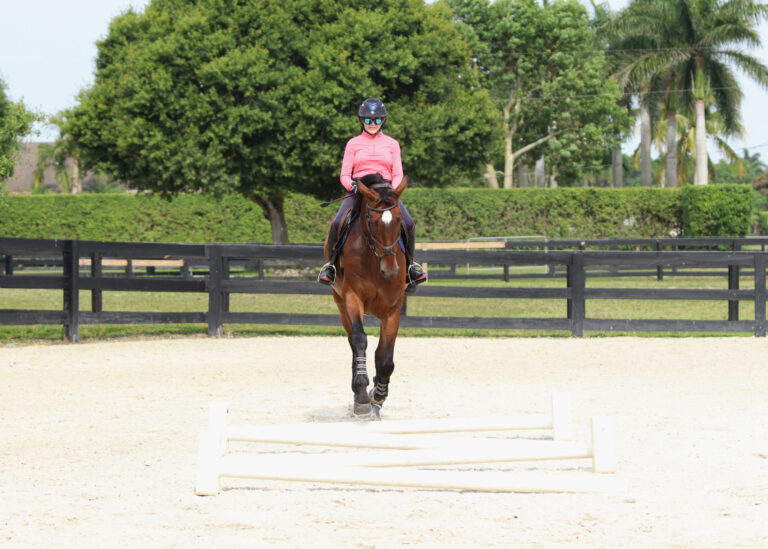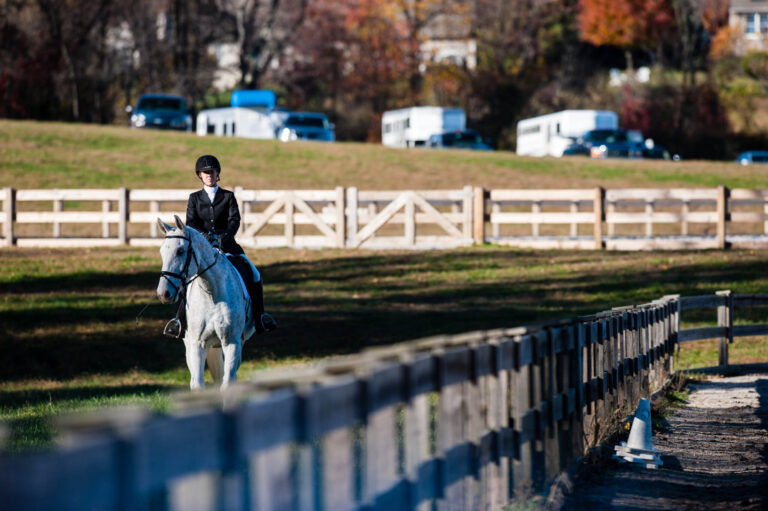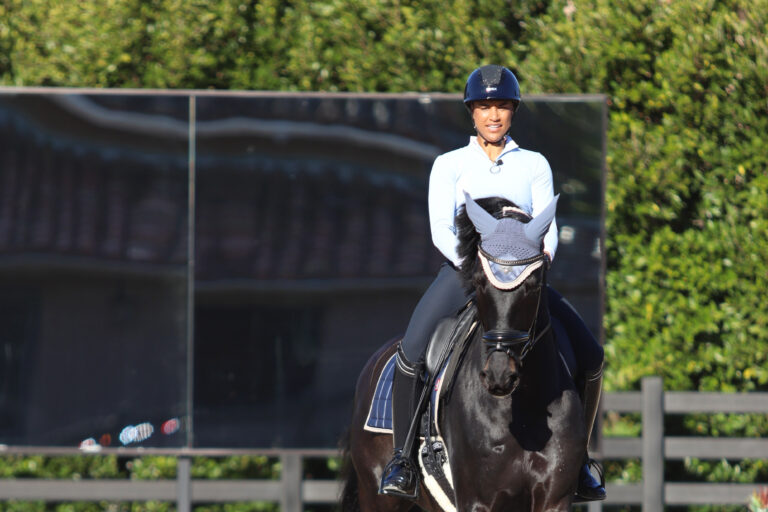In our sport, practice doesn’t make perfect—practicing properly makes perfect. I think this applies especially to accuracy questions out on cross country. When learning to jump corner fences, it doesn’t have to be complicated. In fact, it can’t be complicated. It has to be learned gradually and intentionally.
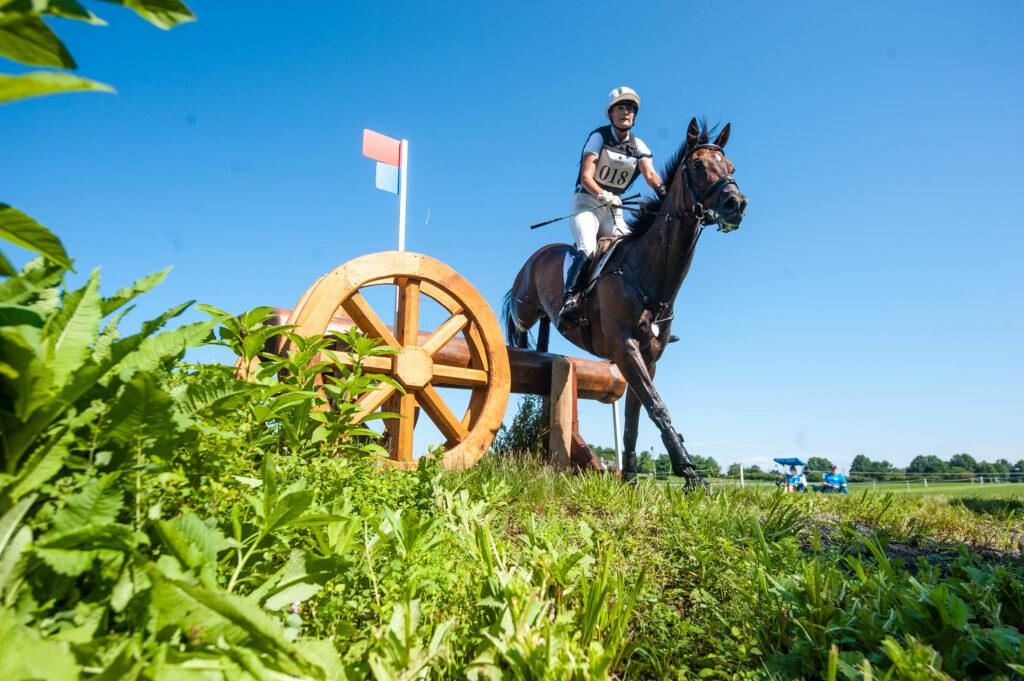
There are two key ideas a rider needs to consider when learning or teaching a horse to jump a corner or any other accuracy question for that matter. First, start slowly in a controlled setting. Secondly, keep in mind that sufficient preparation creates respect for the question being asked.
The goal, above all, is to create a positive experience for riders and horses from the very beginning. Accuracy questions, especially corners, are designed to invite an easy out—a way around the obstacle rather than staying between the flags. But when a horse or rider train correctly, neither should feel the need to yield to that temptation, even when surprises pop up.
Start Slowly in a Controlled Setting
There’s a real difference between practicing corners in the ring versus cantering to them on a cross-country course, but the lessons learned in the ring are fully transferable to the field. That’s why I prefer to teach riders and young horses in a more controlled environment first. You can create a more gradual understanding of the question, what it takes to answer it and reduce the risk of even considering the easy way out–a runout, which is a common mistake.
While a rider may not be forced to ride a true corner until the upper levels of eventing, I think many don’t give the obstacle the respect it demands early on. Even at Training level, a rider shouldn’t be approaching a corner the way she would a broad table or brush fence. I don’t think any rider can ever approach a corner casually or at a gallop. It’s designed to make her ride with a little more discipline, and if she leaves the door open for her horse to take the easy way out, it’s one of the most difficult issues to fix.
Practicing in a ring setting with poles, standards and maybe even barrels, allows for changing the height and angle, which helps horses and riders learn gradually how it’s supposed to feel to focus on a line and stay between the flags. That’s why from the beginning I like to see a horse and rider thinking about corner jumps with the idea that they’re always going to be more challenging and demand more thought at every level.
There’s no reason when a horse or rider is first learning to risk opening that door in a cross-country setting when they can learn to be prepared and technically correct in a ring. Then, once they understand the feel of it, they can take it into the cross-country field.
Proper Preparation Creates Respect
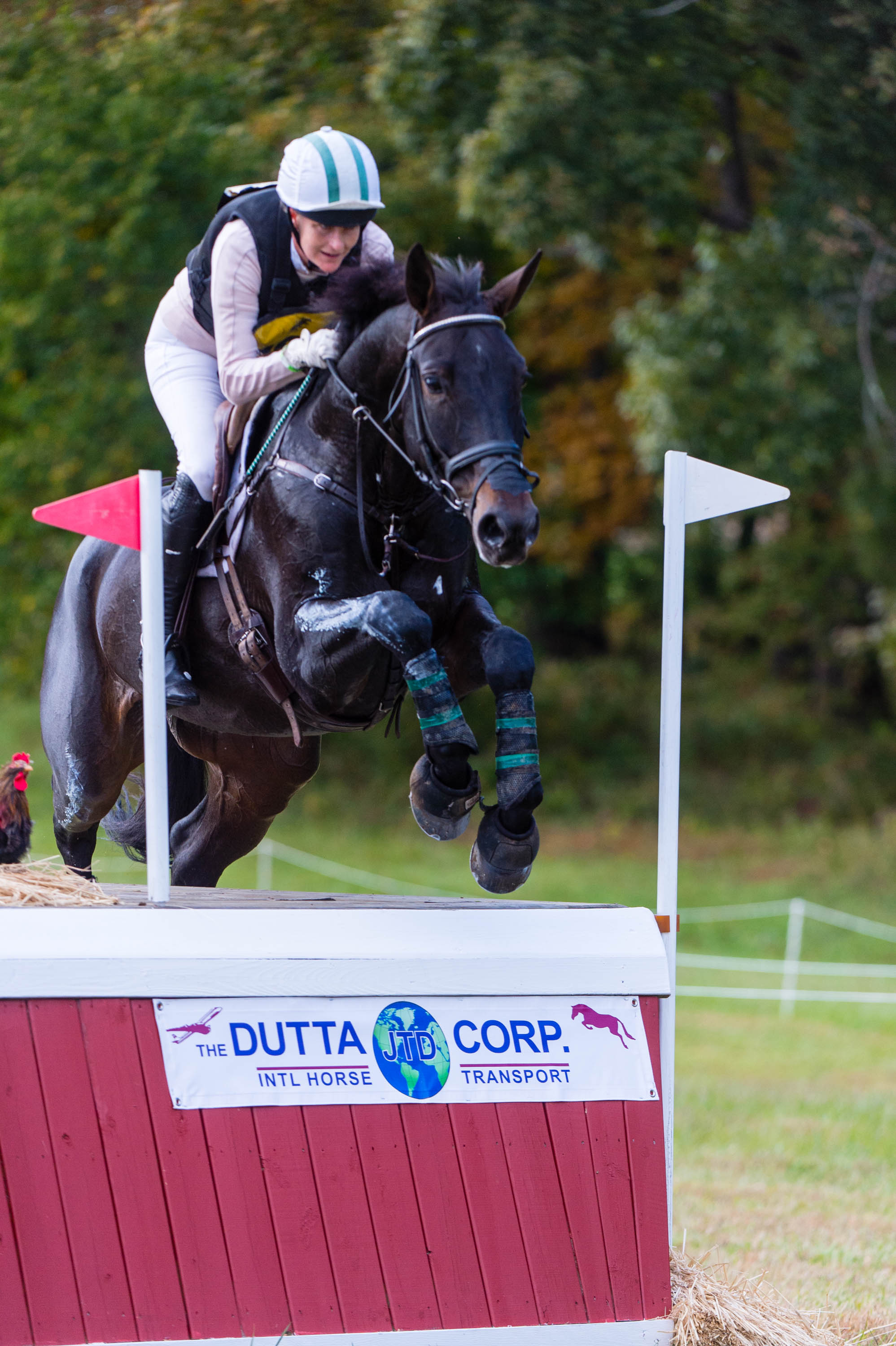
Once a horse or rider learns to respect the corner as the accuracy question it is, then she can jump it like any other fence. That may sound like a contradiction, so let me explain.
The key is still in the preparation, but this time in a more literal sense. A rider needs to take as much time as she needs to come back from a cross-country gallop and settle into the type of forward, bouncy, show jumping canter her horse needs to jump a corner with the respect the question demands. Then, and only then, is when she can ride it like a show jumping fence.
I like to see riders locking in on their line and settling into a balanced canter about six strides out before the face of the corner. She should be in a light three-point seat in the saddle and the horse should be uphill and balanced. None of this has to happen exactly six strides back, but I find that six strides away is a longer distance than most riders realize. The point is, she needs to be prepared earlier than she might think. Of course, this distance might shorten as the horse or rider graduates to the next level or when their relationship improves.
Much like starting in the ring, I want a horse and rider to take the time each needs to feel comfortable answering the question. Even when surprises happen, say, the horse becomes unsure, spooks or trips, with a responsible distance from a corner’s face, a rider has the time and confidence she needs to react, communicate effectively, stay on her line and keep the horse confident, straight and balanced.
A Word on Using Poles or Flags
There has been some debate about whether or not a horse or rider should learn to “hunt for the flags” over corners or other accuracy questions like narrows or chevrons. For me, it all comes down to ensuring that the horse and rider have a good experience from the beginning and neither ever feels like the easy way out is the only way out. We’ve discussed a gradual approach to reduce overfacing either horse or rider, as well as a proper runway for preparation on the approach to the fence at every level. So, is using poles or flags really necessary? If it helps facilitate a positive learning experience, then I say, yes.
Australian Olympic rider, Chris Burton, often uses what I like to call “training wheels” on the sides of his cross-country fences. They help funnel a horse or rider toward the correct line of an accuracy question. In fact, it’s rare that in practice he ever jumps a narrow or a corner without poles on the sides.
Other upper-level riders do this, too, and I don’t think anyone is necessarily teaching the horse or rider to hunt for the flags or rely on the poles as bumpers, but it’s simply mitigating the risk of a bad experience. It’s eliminating the option to take the easy way out until staying between the flags becomes routine and more rewarding. It’s simply saying, “Hey, this is the way to go, no matter how the fence is shaped.” It’s about preparation and taking the time to ensure understanding. Then, the training wheels can come off.
Riding a bike for the first time can be challenging and sometimes scary for anyone at any age. Jumping a corner or any accuracy question is much the same. A horse and rider need the time to understand how to prepare, how it feels, and that choosing not to do it at all isn’t as much fun. Gradually, as the training wheels are raised and touch the ground less, it becomes easier to ride without them at all. I think if a horse and rider learn to jump corners, or any new fence much the same, practicing and preparing properly will help them learn to ride it in a way that, much like a bike, they’ll never forget.






